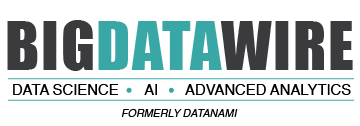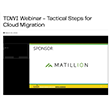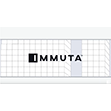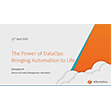
Red Hat Deal Gives Hortonworks Enterprise Clout
The strategic partnership that Hortonworks and Red Hat unveiled today is interesting on several fronts. For starters, there are the joint development projects, most notably the connector that allows Hortonworks’ Hadoop distribution to talk natively to Red Hat Storage. Beyond that, the partnership with the $10-billion commercial open source software company provides a glimpse of who Hortonworks might want to be when it grows up.
 The roots of the partnership go back over a year, when “upstream” open source software developers affiliated with the two companies started working together across various Hadoop, JBoss, Fedora, and OpenStack projects. The first round of integration work on three projects is nearly done, and will be made available via open source license when it’s ready.
The roots of the partnership go back over a year, when “upstream” open source software developers affiliated with the two companies started working together across various Hadoop, JBoss, Fedora, and OpenStack projects. The first round of integration work on three projects is nearly done, and will be made available via open source license when it’s ready.
The companies announced the start of a beta program for the Hortonworks Data Platform (HDP) plug-in for Red Hat Storage. The plug-in will enable HDP to work on data stored in Red Hat Storage platform, which essentially allows customers to build their own petabyte-scale private cloud storage platform (i.e. Amazon S3 without the security and data transfer issues).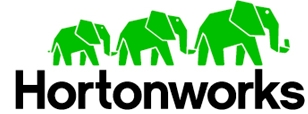
When it’s ready, customers will just need to download the latest release of HDP with Ambari, and the software will virtualize the connections, enabling HDP to write and read data to and from Red Hat Storage as a Hadoop compatible file system, says Red Hat director of storage business strategy Greg Kleiman. “It basically puts an HDFS API on top of it, so YARN and Pig and Hive and MapReduce think they’re saving it to HDFS, but it’s really going to Red Hat Storage,” he says.
Developers are the target of the work Hortonworks and Red Hat are doing to integrate HDP with OpenJDK. “We’re not asking them to write low-level MapReduce code with this integration,” says Hortonworks vice president of corporate strategy Shaun Connolly. “They’re actually able to operate at a much higher level, a much more agile layer.”
The new JBoss Data Virtualization connector will make it easier to pull outside data into Hadoop, including data residing in third party data warehouses, SQL and NoSQL databases, enterprise and cloud applications, and flat and XML files. This will allow enterprise customers, and in particular application developers, “to represent the data inside of Hadoop through a common data model and therefore allow it to be combined with data sources outside of Hadoop, like OTLP systems, transaction systems in large enterprise, or large SQL databases,” Connolly says.
The third area of current collaboration between Hortonworks and Red Hat is in the OpenStack arena. “We’ve been doing a lot there together in the upstream community around the Savanna project,” Kleiman says. “We are already aggressively collaborating around bringing Hadoop, and specifically elastic Hadoop, to OpenStack, which basically allow enterprises to get all the best of elastic MapReduce, but inside on their secure private cloud.”
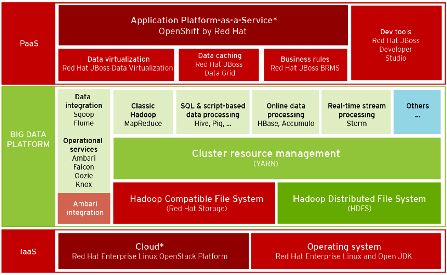 |
|
| The Big Data Analytics stack, in green (Hortonworks) and red (Red Hat) | |
When you add it all up, the combination of Hortonworks’ big data analytics and Red Hat’s infrastructure offerings create a platform that can support any deployment scenario, from on premise running on RHEL to virtualized running on Red Hat Enterprise Virtualization to cloud running on OpenStack, Kleiman says. “It gives operators inside the enterprise more flexibility, and gives developers more options on how to deploy,” he says.
The new partnership seems like a natural fit on many levels. (The companies call this an extension of an existing partnership, but Red Hat was not listed among Hortonworks’ partners on the company’s website). The most obvious similarity is the strong commitment to open source at both companies. Red Hat, of course, was the initial pioneer of the open source movement when Linux first started gaining steam in the early 2000s. Red Hat was also the first company to spearhead the commercial open source model that so many big data analytics companies today are emulating.
While all Hadoop distributors talk about their commitment to open source, none go so far as Hortonworks in backing it up with action. When Red Hat surveyed the field of Hadoop vendors, Hortonworks stood out for its commitment to open source software and its ability to test Hadoop at scale, Kleiman says. “The common theme is we’re both 100 percent open source companies,” he says. “Hortonworks is absolutely the best match for Red Hat among all the Hadoop distributions.”
Meanwhile, working with Red Hat gives Hortonworks enterprise clout and backing as battles for Hadoop supremacy with the likes of Cloudera, IBM, Pivotal, and Intel. Red Hat survived epic platform battles with Microsoft–which, ironically, is another strategic ally of Hortonworks–and today commands $1.3 billion in revenue and a market capitalization in excess of $10 billion.
As enterprises move to adopt new analytic applications built on Hadoop, Hadoop distributors need to make it as easy as possible for customers to develop the app, to provide choice in where to run it, and to feed it with as many data sources as possible. The partnership with Red Hat meets these three needs for Hortonworks.
The companies are considering building additional tools together in the future, including hooking into the JBoss data grid, Red Hat’s NoSQL data store; hooking into the JBoss business rules engine; and the OpenShift integration. Today, the integration points are a bit of a hodge-podge, with some bits available from Hortonworks and some from Red Hat, so there is the possibility that the companies would stitch the products more closely together at some point in time.
There’s also the possibility (although no representatives of Red Hat or Hortonworks would say this) that Red Hat might be interested at some point in potentially buying a company like Hortonworks. Obviously that’s not the announcement we’re seeing today, but it’s something to keep in the back of your mind as big data analytic applications become more mainstream and the Hadoop marketplace matures.
Related Items:
Shining a Light on Hadoop’s ‘Black Box’ Runtime
The Future of Hadoop Runs on Tez, Hortonworks Says
Reaping the Fruits of Hadoop Labor in 2014
February 20, 2025
- Accenture Invests in Voltron Data to Help Organizations Use GPU Tech to Simplify Large-Scale Data Processing
- DDN Unveils Infinia 2.0 to Streamline AI Data Management and GPU Utilization
- Together AI Raises $305M Series B to Power AI Model Training and Inference
- Starburst Closes Record FY25, Fueled by Rising AI Demand and Growing Enterprise Momentum
- GridGain Brings Apache Ignite Community Together for Ignite Summit 2025
- Elasticsearch Open Inference API now Supports Jina AI Embeddings and Rerank Model
- HarperDB Named an IDC Innovator for Edge Inference Delivery
- EDB Postgres AI Outperforms Oracle, SQL Server, and MongoDB in New Benchmark
- CData and Ellie.ai Partner to Streamline Enterprise Data Modeling
- Privacera Aligns AI Governance with NIST Standards to Mitigate AI Risks
February 19, 2025
- AtScale and Snowflake Announce Integration with Cortex Analyst to Deliver Trustworthy Natural Language Queries
- Sawmills Exits Stealth with $10M to Tackle Skyrocketing Observability Costs Using AI
- Prophecy Finds GenAI Boosting Data Team Productivity by Up to 50%
- CTERA Enhances Cybersecurity and AI Capabilities in Record-Setting Year
- VAST Data Introduces Event Broker for AI-Driven Real-Time Streaming
- DiffusionData Announces Free Trial of Diffusion Cloud
- Cube Launches Cube Cloud for the Microsoft Enterprise
- VAST Data Adds Block Storage to Unify Enterprise AI and Hybrid Workloads
February 18, 2025
- OpenTelemetry Is Too Complicated, VictoriaMetrics Says
- What Are Reasoning Models and Why You Should Care
- Three Ways Data Products Empower Internal Users
- Keeping Data Private and Secure with Agentic AI
- Memgraph Bolsters AI Development with GraphRAG Support
- Three Data Challenges Leaders Need To Overcome to Successfully Implement AI
- PayPal Feeds the DL Beast with Huge Vault of Fraud Data
- Top-Down or Bottom-Up Data Model Design: Which is Best?
- What Leonardo DaVinci Teaches Us About Data Management
- Inside Nvidia’s New Desktop AI Box, ‘Project DIGITS’
- More Features…
- Meet MATA, an AI Research Assistant for Scientific Data
- AI Agent Claims 80% Reduction in Time to Complete Data Tasks
- DataRobot Expands AI Capabilities with Agnostiq Acquisition
- Snowflake Unleashes AI Agents to Unlock Enterprise Data
- EDB Says It Tops Oracle, Other Databases in Benchmarks
- Collibra Bolsters Position in Fast-Moving AI Governance Field
- Microsoft Open Sources Code Behind PostgreSQL-Based MongoDB Clone
- AI Making Data Analyst Job More Strategic, Alteryx Says
- VAST Data Expands Platform With Block Storage And Real-Time Event Streaming
- Databricks Unveils LakeFlow: A Unified and Intelligent Tool for Data Engineering
- More News In Brief…
- Informatica Reveals Surge in GenAI Investments as Nearly All Data Leaders Race Ahead
- Gartner Predicts 40% of Generative AI Solutions Will Be Multimodal By 2027
- PEAK:AIO Powers AI Data for University of Strathclyde’s MediForge Hub
- DataRobot Acquires Agnostiq to Accelerate Agentic AI Application Development
- Cloudera Welcomes Tom Brady as Keynote Speaker at ELEVATE26
- Starburst Closes Record FY25, Fueled by Rising AI Demand and Growing Enterprise Momentum
- TigerGraph Launches Savanna Cloud Platform to Scale Graph Analytics for AI
- EY and Microsoft Unveil AI Skills Passport to Bridge Workforce AI Training Gap
- Alluxio Enhances Enterprise AI with Version 3.5 for Faster Model Training
- DeepSeek-R1 models now available on AWS
- More This Just In…
